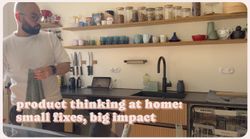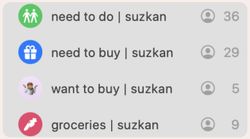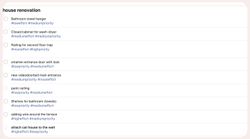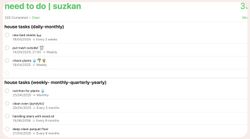Product thinking at home: small fixes, big impact

As a product manager in the accessibility space at a start-up, I spend a lot of time thinking about priorities—what to build, when to build it, and how to make the most impact with limited resources. No surprise that this carries over to my personal life and vice-versa, because work and personal, I think, aren't that different from each other.
Take our home to-do list, for example. It’s not filled with grand renovations or dramatic makeovers. It’s simple things: changing a tap that’s awkward to use, building shelves for our cats, repainting scuffed walls. They’re not urgent, but they matter. and if we’re not intentional, they can linger there for months.
This is where product thinking comes in.
We keep track of everything using shared apple reminders and notes. It’s simple, minimal, and works for us. We’ve broken things down into a few recurring lists: “need to do,” “need to buy,” “want to buy,” and “groceries.”

At work (at Envision), we use Notion and the setup is of course far more complex—linked databases, kanban boards, priority scores. but for the house, reminders is enough. one thing we do borrow from work, though, is tagging tasks by effort and priority. We’ve found that’s often all we need to decide what gets done and when.

If something is high priority and low effort, it gets done fast. If the effort level is high, that usually means it’s a task we can’t do ourselves and may need help from a specialist or company. the system isn’t perfect, but it helps us be intentional—and to actually move forward rather than think about things endlessly.
But we also go one level deeper. we’ve organized recurring tasks into groups by frequency—daily, weekly, monthly, even yearly. this might sound like overkill, but it’s a game-changer. Because the truth is, you often forget when you last did something. Oiling wooden furniture, checking ventilation filters, descaling appliances—if you wait until there’s a visible problem, it’s usually too late.

A bit of regular maintenance keeps everything smoother, longer. And it mirrors how i work: i have recurring 15-minute meetings just for check-ins, little nudges to stay on track. At home, it’s the same philosophy—small effort now saves big effort later.
There’s joy in all this too. Not just in ticking things off a list, but in learning, building, and doing. Whether it’s adding blackout material to roller blinds or reusing plywood to build cat shelves, it’s satisfying to make something functional and personal. These aren’t perfect fixes—they’re lived-in, honest, and enough.
Just like in accessibility work, small changes can create big shifts in experience. that’s true for users—and for ourselves.
So here’s to thinking like a product manager at home. It’s all about impact. One small fix at a time.